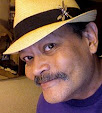I read this poem just a week ago to an audience of veterans. I gave a reading on 18 March 2025 at the Iowa Veterans Home, and this poem was well-received. This poem has had an interesting publication history. It first appeared in The Journal of American Culture (1993). Then it was published in my poetry collection Dragonfly (1994). Reprinted in Asian American Literature: A Brief Introduction and Anthology (1996). Then it appeared again in Fighting Kite (2007). The poem has also appeared a couple of times in the blog. First in 2009, in "Keeping Six Words Tumbling in Air" (when I discussed it with some University of Georgia students whose professor had assigned it in an Asian American literature course) and second in 2025, as part the serialization of my book Dragonfly. In the more recent post from this year, I said, "this poem needs a trigger warning: a derogatory word for Asian appears in it, a word that is here because this is soldier talk from the '70s. I have not changed this word because it is true to the voice of this character (and it is a character, not myself)." Page 24 Page 25 Here's an excerpt from the 2009 blog post on this poem, with regard to some of the specific wording: In line 6, "H&I" stands for Harrassment and Interdiction: indiscriminate artillery fire at the enemy to break their morale; of course, this procedure caused a great deal of so-called "collateral damage," i.e., injury and death among civilians and noncombatants. Ain't military terminology as fun as a barrel of junkies? In line 7, "class A's" are semi-formal Army uniforms, similar to a suit and tie. A "shelter half" refers to half of a pup tent (line 24); two soldiers would team up to make up a single tent for bivouac or encampment. The Philippine Scouts (line 27) were an eliteThis excerpt continued with a reference to the 1996 textbook appearance: "With regard to the Wong textbook in particular, there are two errors. The word 'is' in the first line was typeset as 'in' in the textbook. Also, 'nước mắm' is misspelled in the textbook as 'nuoe mam,' without the diacritics essential in printed Vietnamese." The reason I brought it up is that blog post was intended to address some students at the University of Georgia who were reading my poems in the textbook in a class, and their professor contacted me to discuss the poems with them. The added benefit is that my own students in classes where we discussed my poems in the textbook since then have had that resource as well. With regard to poetic craft, this poem is a sestina. Here's what I said in that 2009 blog post: "[T]he sestina repeats the ending words of each line in the sestets (six-line stanzas) so that they eventually appear at the end of every possible location (the first line of the sestet, the second line, etc.). Then the repeating words (called repetons [REHP-uh-tawns]) appear in a three-line stanza (known as an envoi [own-VWAH]), two words per line, one at the end of the line and the other in the middle." This is actually not accurate . . . I misnamed the repeating end-words; they are in fact called teleutons (TELL-you-tawns). Take a look at the 2009 blog post for a diagram (in color!) of how the teleutons cycle throughout the poem. I quite like my discussion of how the teleutons are altered as the poem unfolds: As you can see, I "cheat" by altering the repetons occasionally (this is pretty common practice among contemporary writers of the sestina). For example, "Vietnam" becomes "'Nam" in stanza 2, "Vietnamese" in stanza 4, and finally "Vietcong" in the envoi. Almost always sestina alterations are done through consonance ("wish" ——> "whoosh" ——> "wash"). I'm pretty proud of how, in stanza 6, the "sent"/"send" sound is rendered by "arc's end" — cool, eh? I'm even more proud (perversely so) of "father" becoming "motherfucker" . . . a kind of literalist double entendre. And there is even a basis here (admittedly distant) in rich consonance: /f/ and /r/ inFinally, I want to focus on the genesis of the poem. I had read an excellent story, "The Persistence of Memory" by Walter Howerton, Jr. (from an anthology called The Perimeter of Light), about a Vietnam-vet wannabe who is driven to fakery to try to connect with his dead WWII-vet father. This poem is an imitation of that fine story, using some of my own autobiographical details: I am a Vietnam era vet — I was in the US Army during the Vietnam war but was not sent there — and I imagined a soldier like me connecting with his WWII-vet father, modeled after my own father. Anyway, the poem is not autobiographical, essentially, although it does use elements from my father's and my personal history. There's more on this in the earlier two blog posts. As always, I'd love to get some feedback or discuss anything with all y'all. Comment, okay? Thanks. Ingat.
|
purple hallelujah
9 hours ago






No comments:
Post a Comment